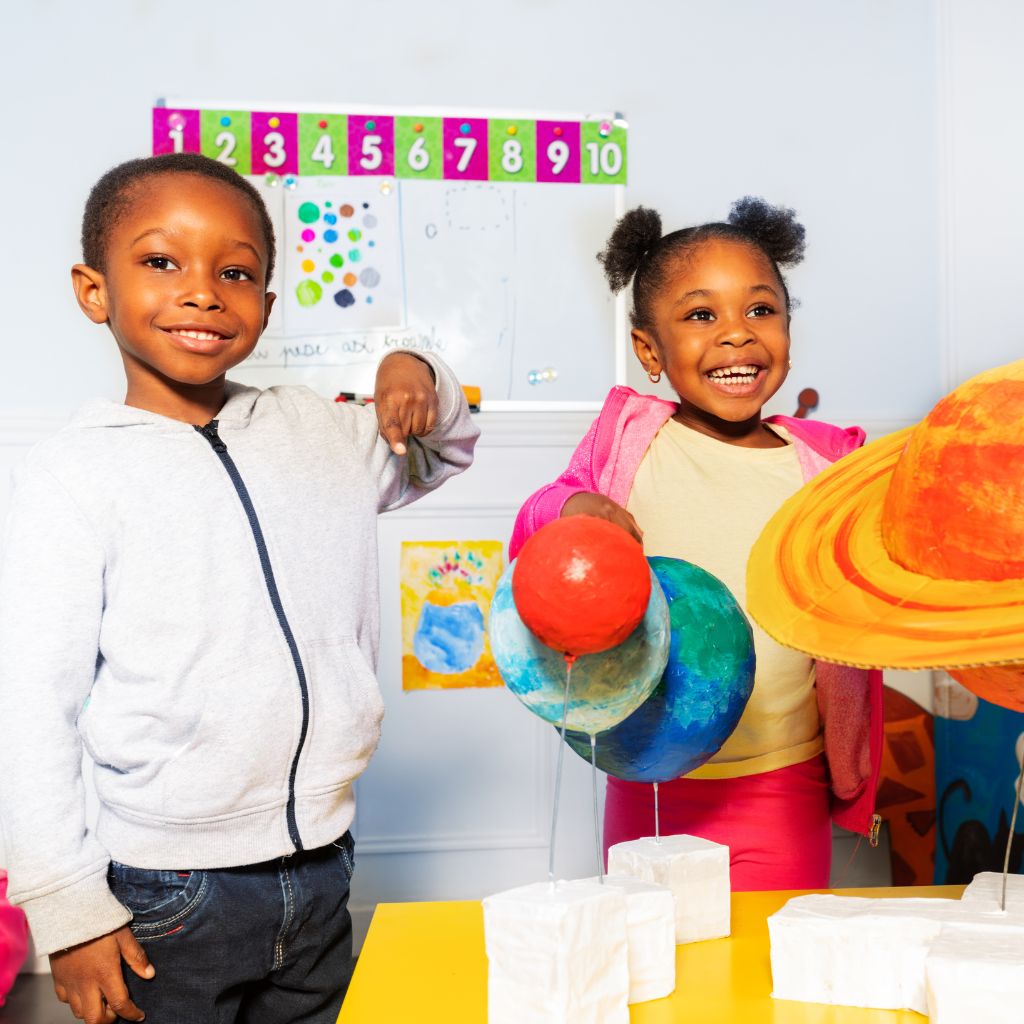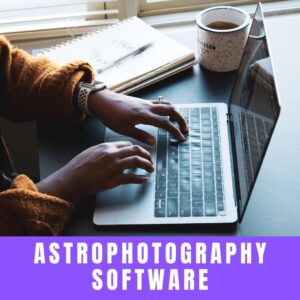This site contains affiliate links to products. I may receive a commission for purchases made through these links.
I’ve always been fascinated by the endless expanse of the cosmos. It’s a place where stars twinkle, planets revolve, and mysteries abound. But how do you bring this vast universe to the grasp of a preschooler? Easy! With space-themed activities designed just for them.
From creating their own galaxies in a jar to building rockets that fly, there’s a universe of fun waiting for your little astronauts. These activities aren’t just entertaining, they’re also a great way to introduce basic scientific concepts. So buckle up and get ready for a space adventure right in your living room!
Remember, the goal is to make learning fun and interactive. With these space-themed activities, your preschooler will be over the moon. So let’s embark on this stellar journey together, shall we?
1. Exploring the Solar System
Who doesn’t marvel at the night sky’s twinkling stars? There’s a whole galaxy out there just waiting to be discovered! That’s why it’s crucial to get our little ones interested in space from an early age. And trust me, exploring the solar system can be quite a captivating activity!
Let’s talk about how we can transform an average day into a fun, space-exploring adventure for our preschoolers. With a little bit of creativity and the right tools, the solar system can be as close as your living room.
We’ll start by creating our own little universe. You’ll need some construction paper, a pair of scissors, and a bit of creativity. Divide the paper into nine parts – one for each planet in the solar system (pluto included!). Colors matter when you’re teaching kids about space, choose colors that best represent each planet. Can’t decide on the colors? Here’s an idea:
| Planet | Paper Color |
|---|---|
| Mercury | Gray |
| Venus | Yellow |
| Earth | Blue |
| Mars | Red |
| Jupiter | Orange |
| Saturn | Pale Yellow |
| Uranus | Blue-Green |
| Neptune | Dark Blue |
| Pluto | Brown |
Once you have all the planet cutouts ready, it’s time to make a mobile. Trust me; this will instantly turn your living room into a mini universe. It’s fun, it’s exciting and, most importantly, educational!
But don’t stop there; use this activity as a launching pad to ignite more inquisitive talks. Discuss the unique features of each planet as you hang them up. Talk about the sun’s location and its effects on the planets surrounding it. Conversations like these will help them grasp the concept of the solar system and more fundamental scientific truths. My little tip – make the chat as interactive as you can, after all, preschoolers do prefer learning by doing.
By using readily available materials and simple, hands-on tasks, I believe we can bring the wonders of the universe to our preschoolers in a fun, engaging and educational way. Keep in mind this is just one part of a galaxy of potential activities! So, stay tuned for more astronomical adventures in the sections to come.
2. Creating a Galaxy in a Jar
Following our previous space adventure of constructing a mini universe, let’s dive deeper into the cosmos. One activity that’s very popular among preschoolers is Creating a Galaxy in a Jar. Here’s how you can orchestrate this cosmic job with your curious young astronomers.
You’ll need a clear jar, cotton balls, acrylic paint (usually blue, pink, and purple), and some glitter. The goal is to create a glittery scene of a galaxy inside a clear jar. Have your preschoolers paint the cotton balls individually, bringing in the aspect of creativity while incorporating valuable lessons about color recognition.
Fill up your jar in layers with these painted cotton balls. Add glitter on top of each layer to represent your shining stars. Make sure your preschoolers understand that each cotton ball represents a nebula and the glitter represents the stars. This not only stimulates their creativity but also provides a hands-on learning opportunity about the cosmos.
This activity is great for fostering fine motor skills since it involves picking cotton balls, painting, and sprinkling glitter. It also serves as an opportunity to explain concepts like galaxies, stars, and nebulas in a fun and creative way!
Proceeding further, let’s prepare for our next venture!
3. Launching Rocket Ships
Ready for liftoff? It’s time to dive into one of the most exciting space-themed activities: creating and launching mini rocket ships. By using common household items, we foster creativity, resourcefulness, and problem-solving skills among preschoolers while introducing concepts around propulsion and aerodynamics.
Watch your child’s eyes light up as they construct their very own spacecraft, improvise design variations, and witness the magic of their creations soaring towards the ‘sky’.
To create these homespun rocket ships, you’ll need some household items:
- Empty toilet paper rolls
- Construction paper
- Glue
- Scissors
- Paint and paintbrushes
Step one begins with transforming an empty toilet paper roll into a rocket’s body. Paint the roll in a color of the child’s preference and let it dry. Meanwhile, cut out a circle from construction paper and cut a slit to the center to form a cone, which will serve as the rocket’s top.
For the fins, don’t hesitate to encourage creativity. Some children might wish for triangle-shaped fins while others might imagine their rocket with square or even round fins. By using the construction paper, assist your child to cut out their chosen shape and affix it to the painted toilet paper roll.
We then attach the top cone to complete the rocket ship. Now, the fun truly begins as we countdown and send our homemade rocket soaring into the stratosphere (or the ceiling).
While the activity underscores learning through play, it connects well with the scientific principle: action and reaction. It shows children first-hand how a rocket works and why it moves upwards when the engine is ignited. The launcher used in the activity is a simple and safe one, but it works on the same basic premise as real rocketry.
Every launch can be a new learning opportunity. Pay attention to the launch angle, the flight height, materials used, and more. Record the results and you’ll see how the young ones will soon be making connections and predicting outcomes based on their previous experiences.
4. Making Moon Sand
After we’ve sent our homemade rocket ships soaring skyward, let’s bring our young astronauts back down to earth—or rather, the moon. Our next fun-filled activity is creating moon sand, an easy and hands-on way to bring the outer space environment right to our preschoolers.
What’s moon sand, you may ask? It’s a simple mixture of two common household items: flour and baby oil. But when combined, they create a fantastic sensory play material with a texture rather like our real-life lunar surface.
To create moon sand, you’ll need 8 cups of flour and 1 cup of baby oil. Simply mix these two ingredients together until they’re well blended. Your preschooler can help with this, enhancing their fine motor skills while enjoying an engaging, tactile experience. The resulting material is soft, moldable, and holds its shape much like wet sand.
With moon sand at hand, there’s no limit to the creativity it can inspire. Encourage your preschooler to mold it into various shapes or even build their own lunar landscapes. You can add plastic astronauts, moon rovers, or alien creatures to the mix for even more imaginary play.
While playing, there are plenty to learn here too. From observing the imprints left behind in the sand and comparing it to the footprints left by astronauts on moon, to understanding the concept of landscapes. It’s a fantastic method to introduce basic Earth and environmental concepts to young minds. It also aids in the development of their hand-eye coordination and enhances their sensory perceptions.
On top of all, moon sand can be stored and used for months, giving your child plenty of hours to explore the peculiar texture while learning and having fun. So why not give it a try and foster your child’s interest in the vast world that lies beyond our planet.
5. Stargazing at Home
Another activity that’ll surely leave an impact on your little star voyagers is Stargazing at Home. This activity helps children get familiar with the night sky, enabling them to spot and identify different astronomical bodies right from their backyards!
Stargazing is no doubt an exciting activity for kids. It’s a chance to stoke their interest in the wonders of the universe. With a suitable child-friendly telescope, or even a pair of binoculars, your preschoolers can get an up-close look at the moon, stars, and perhaps if lucky, even a passing comet.
An even more fun way to go about this is by using star charts or astronomy apps. These tools aid in spotting constellations, learning each one’s name and mythological backstory. For instance, they might get a kick out of finding Orion, the hunter, or identifying the Big Dipper.
Beyond just observing, encourage kids to draw what they see. Provide them with paper and crayons, and let their creativity run wild. They can sketch the moon’s surface, trace constellations, or illustrate the sparkle of different stars. This hands-on approach cements their learning and boosts their artistic skills, all while making the experience fun.
This activity aids in developing important skills like pattern recognition, spatial awareness, and most importantly, curiosity. Watching those faraway glimmering stars can trigger intriguing questions about the universe and its mysteries in their young minds. And isn’t that what preschooldom is all about?
Conclusion
I’ve shared some exciting ways to introduce your preschoolers to the wonders of the cosmos. “Stargazing at Home” is a fantastic activity that not only nurtures their curiosity about the universe but also helps in developing essential skills like pattern recognition and spatial awareness. With a simple telescope or binoculars, and the aid of star charts or astronomy apps, your little ones can embark on a thrilling journey of discovery. Plus, drawing what they observe adds an artistic touch to their learning.
So why wait? Let’s turn their gaze towards the stars and spark their imagination. Remember, today’s tiny stargazers could be tomorrow’s astronomers!







